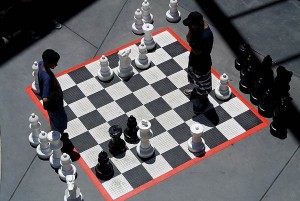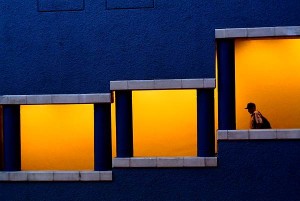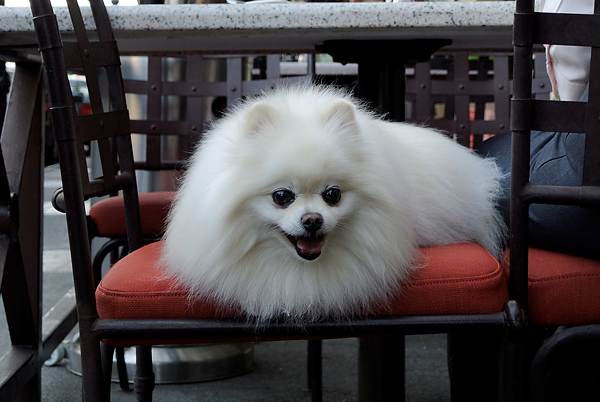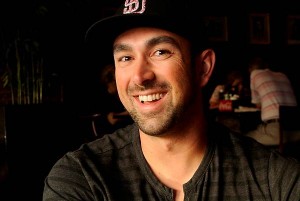Any kid will tell you that play is important. We’ve all heard, “all work and no play makes Jack a dull boy,” though we don’t always remember that. And it’s been proven that play is healthy. So we know that play is fun and can be good for us, but how do we “play” once we’ve grown up? Video games? Sports? Board or card games with friends? One of my favorite forms of play is to wander around with a camera, looking for interesting pictures.
I’ve just returned from San Diego after teaching photography classes there for the last three days. I’d teach all day, finishing at five o’clock. Then after getting everything ready for the next day, our group would go out for dinner. Luckily we were in the Gaslamp district, and that meant lots of choices. It also meant that we were in an old area of town that had been restored, and

Using a high angle I was able to really show off the contrast of the board, and the shadows frame the scene.
there was new construction too. Plus, there were always people around. And that meant it was a great place to look for pictures.
I’m often asked, “how do you look for pictures?” That can be a tough question to answer because we all find different things interesting. What’s common when taking pictures though, is light. You’ve got to have light to make pictures. So I look for areas of light. Which means I’m particularly drawn to areas of light surrounded by darker tones. Those darker areas make it easy for the viewer to see what it is you wanted them to see. And sometimes just the patterns of those light and shadows can make pictures.
So patterns, of course, also make interesting photos. In a man-made world, we’re surrounded by patterns. Buildings, streets, power lines, lights, sidewalks, railings, etc. We just have to start looking for

I added contrast in the camera with Picture Control (Vivid) and underexposed to make the color more intense, then waited for a subject to walk through.
them.
Next I’ll tell people to look for color. That sounds obvious, but you’re looking for bright colors. It’s better if there’s one dominant color and then lesser, supporting colors. And you’ll find yourself drawn to certain colors more than others. Some colors just work well together naturally, like blue and yellow. Underexposing will make those colors darker, and you can also add saturation, either in the camera or in editing software, to give them more impact.
Don’t forget to take pictures of people,, but always try to ask first – it’s just polite. As humans we’re naturally interested in other people. We may not be as open as dogs about it – after all, we don’t sniff each other’s butts – but we certainly notice the people around us. And that means they can make interesting subjects.
Avoid shooting everything from five feet off the ground. Get down, kneel, maybe even put the camera on the ground for a low angle. Shoot kids and pets from their level. And if there’s someplace where you can get above the action, take advantage of that and see what kind of photo you can make from above. Different angles can make for interesting pictures.
Finally, and perhaps most importantly, THINK about your framing. Composition is all about how you choose to frame your scene. Do that consciously. What do you want to include, what do you want to exclude? Look at all four edges of that frame. Perhaps it would be better as a vertical. Don’t be lazy and think you’ll just take care of it later. Be a craftsman with your photography, do everything to get that picture right in the camera, when you push the shutter button.

A minus-2 adjustment to exposure compensation really brought out the deep blue sky against the neon, and the umbrella added a nice shape to the lower part of the image.
All of the photos with this story are shown without cropping or image manipulation.
Play isn’t just important as a way to relax and free your mind from the worries of daily life. It’s also the best way to improve as a photographer. You get better the more you use your camera, the more you think about what you’re doing as a photographer. And it’s fun, too! As far as I’m concerned, that’s a pretty great combination.


